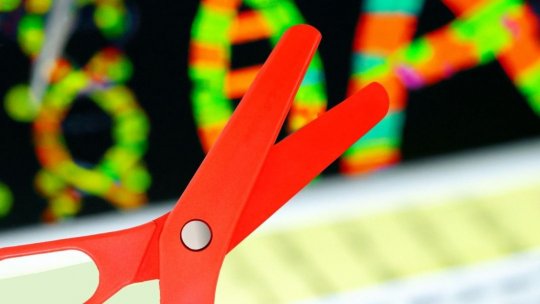博文
通过CRISPR/Cas9进行基因编辑可能导致细胞毒性和基因组不稳定
||
通过CRISPR/Cas9进行基因编辑可能导致细胞毒性和基因组不稳定
诸平

Fig. 1 A TP53 wild-type background can confound estimates of gene selection in genetic screens. a Boxplots showing the pooled normalized sgRNA counts per sample (essential and non-essential genes, and non-targeting sgRNAs; 15 day samples are shown). Tested using 1-tailed Mann-Whitney. *** denotes a p <2.2e-16. No adjustments were made for multiple comparisons. n = 7300 independent sgRNAs examined over six independent experiments. b Barplot showing the number of genes that are negatively (beta score<0) selected, per sample used in this study. Beta score significance: FDR < 0.25. c Venn (left) and corresponding Euler (right) diagrams of the overlap of genes between four sets: genes negatively selected exclusively in TP53wt in our samples (A549), genes negatively selected exclusively in TP53wt in Project Achilles and Score (Achilles + Score), top-50 TP53-interactors (TP53 pathway), and genes included in 19 GO terms related to DNA damage and cell-cycle regulation that we found enriched with genes from the A549 set. d Results of the analysis of overlap between different cell lines and/or sgRNA libraries detailed in Supplementary Text 1a: heatmap shows the log2 odds ratio of the overlap of genes negatively selected exclusively in TP53wt, between different experiments. R: Replicate, PR: Pseudo-replicate. Darker shades of red indicate higher overlap. Black rectangles highlight the overlap between RPE1 Brunello dataset with others. e Comparison between TP53-isogenic cell lines to assess biases in identifying conditional essentiality from genetic screens. x and y axes represent the standardized beta scores (Z-scores) for genes either in the control samples (incl. doxycycline-treated; pseudo-replicates 1 and 2), or in the doxycycline+ATRi treated samples, respectively, averaged across later time points and pseudo-replicates. Coordinate axes were capped in order to zoom on the region of interest. The EM clustering identified two gene clusters as the most likely model, represented by black and gray dots. Black line represents the best fit linear model. The yellow dashed diagonal line represents −2 standard deviations (SD) of the Z-score difference. The light yellow rectangle delimits the tentative significance area containing genes negatively selected in the treatment, but not selected in the control sample (i.e., potentially synthetic lethal with ATRi). The top-20 validated ATRi-sensitizing genes are highlighted with color, and the top-7 (red) are further labelled. Credit: Nature Communications (2022). DOI: 10.1038/s41467-022-32285-1
Fig. 2 Gene editing via CRISPR/Cas9
据西班牙 IRB巴塞罗那(IRB Barcelona)网站2022年8月9日报道,生物医学研究所(Institute for Research in Biomedicine简称IRB)的研究人员发现,通过CRISPR/Cas9进行基因编辑会导致细胞毒性和基因组不稳定(Gene editing via CRISPR/Cas9 can lead to cell toxicity and genome instability)。
IRB巴塞罗那的研究人员确定了基因组上基因编辑可能导致不良反应的关键点,并为更安全的方法提供建议。相关研究结果于2022年8月4日已在《自然通讯》(Nature Communications)杂志网站发表——Miguel M. álvarez, Josep Biayna, Fran Supek. TP53-dependent toxicity of CRISPR/Cas9 cuts is differential across genomic loci and can confound genetic screening. Nature Communications, Published: 04 August 2022, 13, Article number: 4520. DOI: 10.1038/s41467-022-32285-1. https://www.nature.com/articles/s41467-022-32285-1
参与此项研究的有来自西班牙巴塞罗那科学技术研究院(Barcelona institute for Science and Technology, Spain)生物医学研究所(Institute for Research in Biomedicine简称IRB Barcelona)和西班牙巴塞罗那加泰罗尼亚研究和高级研究机构{Catalan Institution for Research and Advanced Studies (ICREA), Barcelona, Spain}的研究人员。原IRB巴塞罗那基因数据科学组(Genome Data Science)的何塞普·比亚纳(Josep Biayna),现在德国维尔茨堡大学医院(University Hospital Würzburg, Germany)工作。
CRISPR/Cas9是一种常用的、非常精确的基因编辑技术,由詹妮弗·杜德娜(Jennifer A. Doudna)和艾曼纽·卡彭特(Emmanuelle Charpentier)开发,获得了2020年诺贝尔化学奖(The Nobel Prize in Chemistry 2020)。CRISPR通常被称为“基因剪刀”,它允许将所需的DNA序列引入(实际上)基因组的任何位置,从而修饰或灭活基因。这项技术广泛用于生物医学研究,一些基于CRISPR的疗法正在临床试验中用于治疗人类血液疾病、某些类型的癌症和 HIV等疾病。
由ICREA研究员弗兰·苏佩克博士(Dr. Fran Supek)领导的IRB Barcelona的科学家们现在报告说,根据人类基因组的目标位点,CRISPR基因编辑可能会导致细胞毒性和基因组不稳定性。这种不需要的影响是由关键肿瘤抑制蛋白p53介导的,并且由编辑点附近的DNA序列和周围区域的各种表观遗传因素决定。
使用计算方法,基因组数据科学实验室(Genome Data Science lab)的研究人员分析了为人类细胞设计的最流行的CRISPR文库,并检测到了3300个显示出强烈毒性作用的目标点。这项发表在《自然通讯》上的工作还报告说,大约15%的人类基因包含至少一个有毒的编辑点。
“我们的工作解决了与TP53相关的Cas9毒性的一个重要问题,这是最近引起一些争议的问题,它还提供了如何回避该问题的指南。避免在这些“风险”点进行编辑,不仅会使CRISPR编辑更高效,而且更重要的是更安全,” 弗兰·苏佩克博士解释说。
可以在多个位置编辑特定基因。上述研究论文的第一作者、米格尔-马丁·阿尔瓦雷斯博士(Dr. Miguel-Martin Alvarez)说:“基因中的某些区域对调控很重要或具有某些表观遗传标记的区域最有可能触发p53反应,因此应作为一般建议予以避免。”
p53介导的毒性和肿瘤发生(p53-mediated toxicity and tumorigenesis)
p53是一种被称为基因组守护者的蛋白质。它检测DNA损伤并导致细胞停止分裂并可能导致程序性死亡,从而阻止它们复制和扩大其DNA中的“错误”。因此,p53是针对癌症和其他DNA损伤相关并发症的天然保护机制的基础。
CRISPR基因编辑通常需要切割两条DNA链。在某些情况下,这种操作可以触发p53反应,其中编辑的细胞可以被“标记”为受损然后被消除,从而降低基因编辑过程的效率。
然而,关于p53和基因编辑的主要并发症是,克服CRISPR编辑的细胞可能正是因为p53功能缺陷而这样做。也就是说,这些细胞可能不太能够检测DNA损伤和/或标记细胞以进行程序性死亡。结果,基因编辑程序最终可能有利于具有不稳定基因组的细胞群,这意味着它们容易积累进一步的突变,从而增加患恶性肿瘤的风险。
“这种不良后果可能会导致基因组不稳定的风险,这在离体CRISPR疗法的背景下是非常不受欢迎的,其中来自患者的细胞在实验室中被编辑并重新引入患者体内。我们希望我们的研究为如何设计更安全的CRISPR试剂提供一些指导,并鼓励进一步研究这个问题,” 弗兰·苏佩克博士总结道。
这项工作是在欧洲研究委员会(European Research Council)和西班牙科学与创新部(Spanish Ministry of Science and Innovation)的资助下进行的。
上述介绍,仅供参考。欲了解更多信息,敬请注意浏览原文或者相关报道。
CRISPR/Cas9 gene editing can inactivate genes in a precise manner. This process involves DNA double-strand breaks (DSB), which may incur a loss of cell fitness. We hypothesize that DSB toxicity may be variable depending on the chromatin environment in the targeted locus. Here, by analyzing isogenic cell line pair CRISPR experiments jointly with previous screening data from across ~900 cell lines, we show that TP53-associated break toxicity is higher in genomic regions that harbor active chromatin, such as gene regulatory elements or transcription elongation histone marks. DSB repair pathway choice and DNA sequence context also associate with toxicity. We also show that, due to noise introduced by differential toxicity of sgRNA-targeted sites, the power of genetic screens to detect conditional essentiality is reduced in TP53 wild-type cells. Understanding the determinants of Cas9 cut toxicity will help improve design of CRISPR reagents to avoid incidental selection of TP53-deficient and/or DNA repair deficient cells.
https://blog.sciencenet.cn/blog-212210-1350716.html
上一篇:低压,高风险:物理学家在室温超导竞赛中取得重大进展
下一篇:机器人在弯曲空间中的运动违反标准物理定律
